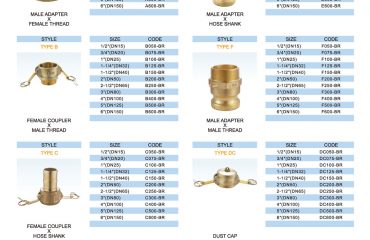Why Are Camlock Couplings Ideal for the Chemical Industry?
1. Quick and Secure Connections
– No tools required – Operators can connect or disconnect couplings in seconds, reducing downtime.
– Positive locking mechanism – The cam arms ensure a tight seal, preventing accidental disconnections.
2. Leak-Proof Performance
– Chemical-resistant gaskets (e.g., Viton®, EPDM, PTFE) prevent leaks, even with aggressive solvents, acids, or alkalis.
– Ideal for hazardous material transfer where spills must be avoided.
3. Corrosion Resistance
– Stainless steel (SS 304/316) – Best for corrosive chemicals like sulfuric acid, chlorine, and caustic soda.
– Polypropylene/Nylon – Lightweight and resistant to many organic solvents.
4. Versatility in Applications
Camlock couplings are used across multiple chemical processes:
– Bulk chemical transfer (acids, solvents, fertilizers)
– Tank loading/unloading
– Pneumatic conveying of powders
– Waste handling and drainage
5. Compliance with Safety Standards
– Meets OSHA, EPA, and ATEX (for explosive environments) requirements.
– Reduces the risk of worker exposure to hazardous chemicals.
Camlock couplings are indispensable in the chemical industry, offering speed, safety, and reliability in fluid handling operations. By selecting the right material, maintaining proper care, and following safety protocols, chemical plants can maximize efficiency while minimizing risks.
Whether transferring aggressive acids or high-purity solvents, Camlock couplings ensure a secure and efficient process—making them a staple in modern chemical operations.


